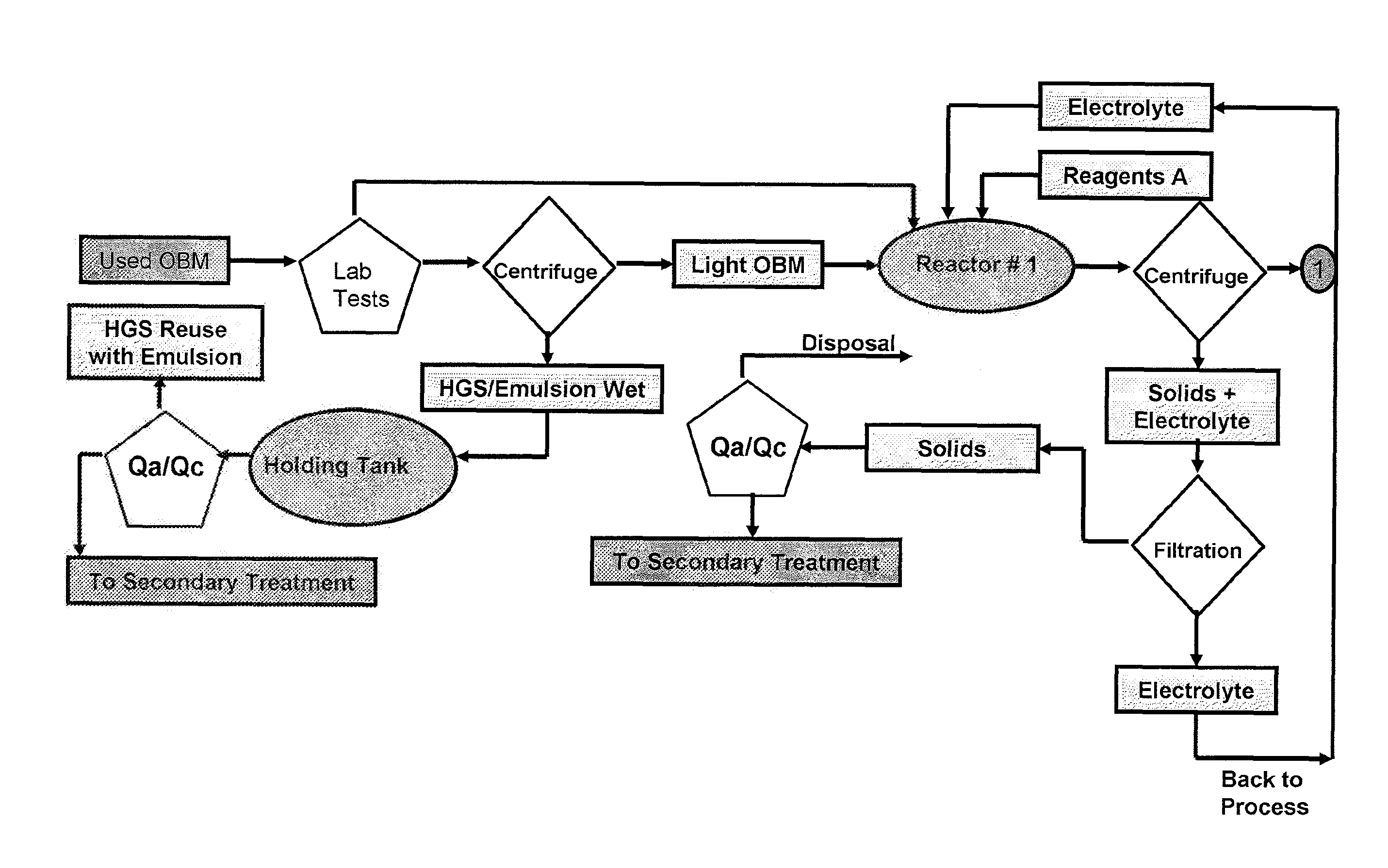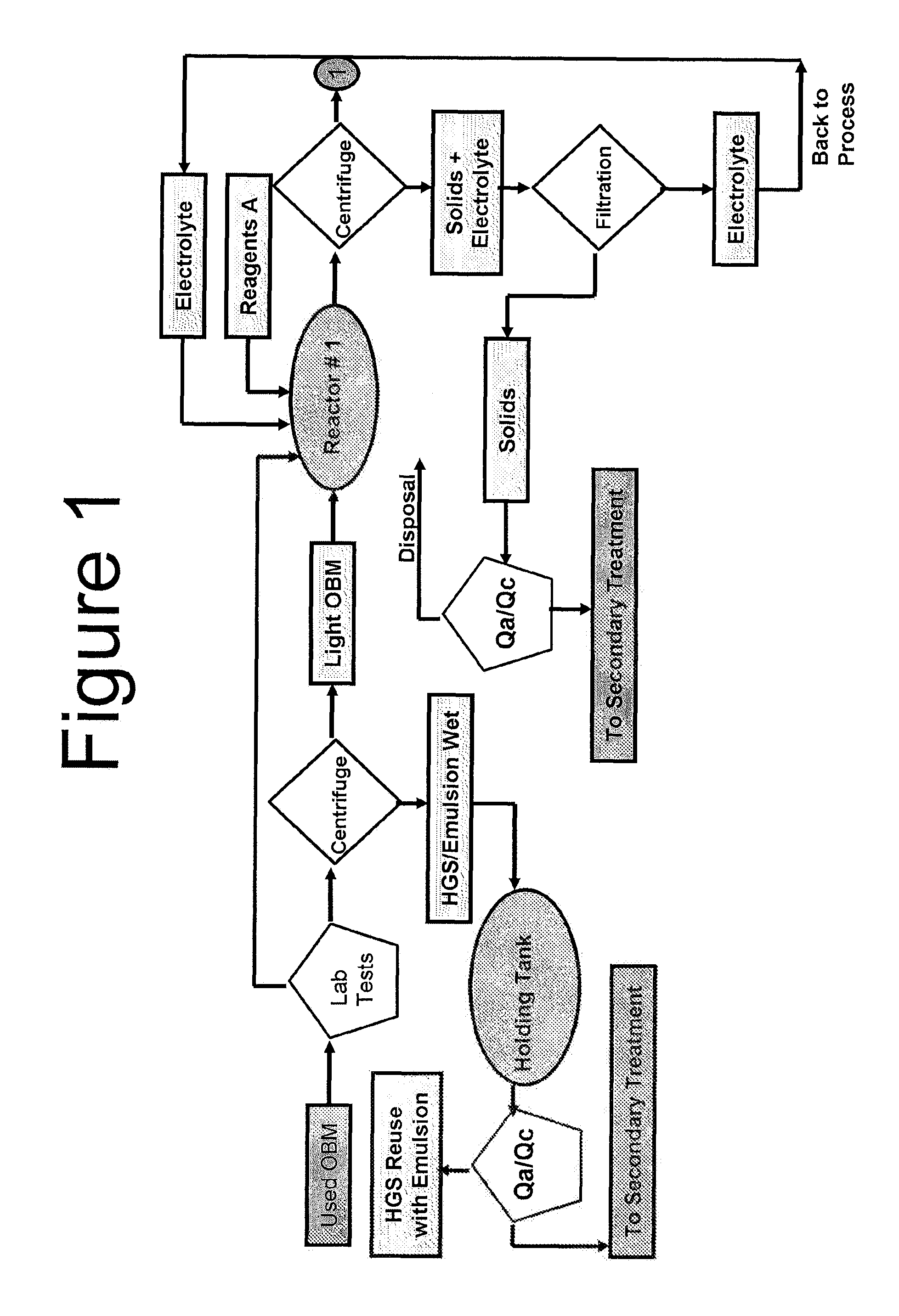Method and system to recover usable oil-based drilling muds from used and unacceptable oil-based drilling muds
a technology of oil-based drilling mud and recovery method, which is applied in the direction of drilling casings, drilling pipes, borehole/well accessories, etc., can solve the problems of difficulty in continuing use, emulsions with a concentration higher than 4% in lgs are no longer good for continuing drilling, and the electrical stability voltage (esv) also starts to drop. , to achieve the effect of disposed or
- Summary
- Abstract
- Description
- Claims
- Application Information
AI Technical Summary
Benefits of technology
Problems solved by technology
Method used
Image
Examples
Embodiment Construction
[0085]The present invention relates to methods and apparatus for treatment of used Oil Based drilling Muds (OBM's) for barite and emulsion recovery for reuse and for a safe disposal of the Light Gravity Solids (LGS). The system recovers a fraction of the oil used for the emulsion as illustrated in FIG. 1.
[0086]Cuttings (particles larger than 1 mm) carried by the OBM's are pumped to and separated through a shale shaker or centrifuge (using conventional techniques) the recovered OBM is tested for quality for further drilling, the parameters tested are:
[0087]Oil / Water Ratio (OWR).
[0088]Electrical Stability Voltage (ESV).
[0089]Light Gravity Solids concentration (LGS).
[0090]Rheology.
[0091]Weight (in lbs / gal).
[0092]API High Pressure—High Temperature Filtrate.
[0093]The above parameters will be determined the condition for drilling or if the emulsion has to be processed or discarded. If further processing is needed, dilution with new emulsion and barite can be employed but it increments con...
PUM
 Login to View More
Login to View More Abstract
Description
Claims
Application Information
 Login to View More
Login to View More - R&D
- Intellectual Property
- Life Sciences
- Materials
- Tech Scout
- Unparalleled Data Quality
- Higher Quality Content
- 60% Fewer Hallucinations
Browse by: Latest US Patents, China's latest patents, Technical Efficacy Thesaurus, Application Domain, Technology Topic, Popular Technical Reports.
© 2025 PatSnap. All rights reserved.Legal|Privacy policy|Modern Slavery Act Transparency Statement|Sitemap|About US| Contact US: help@patsnap.com



